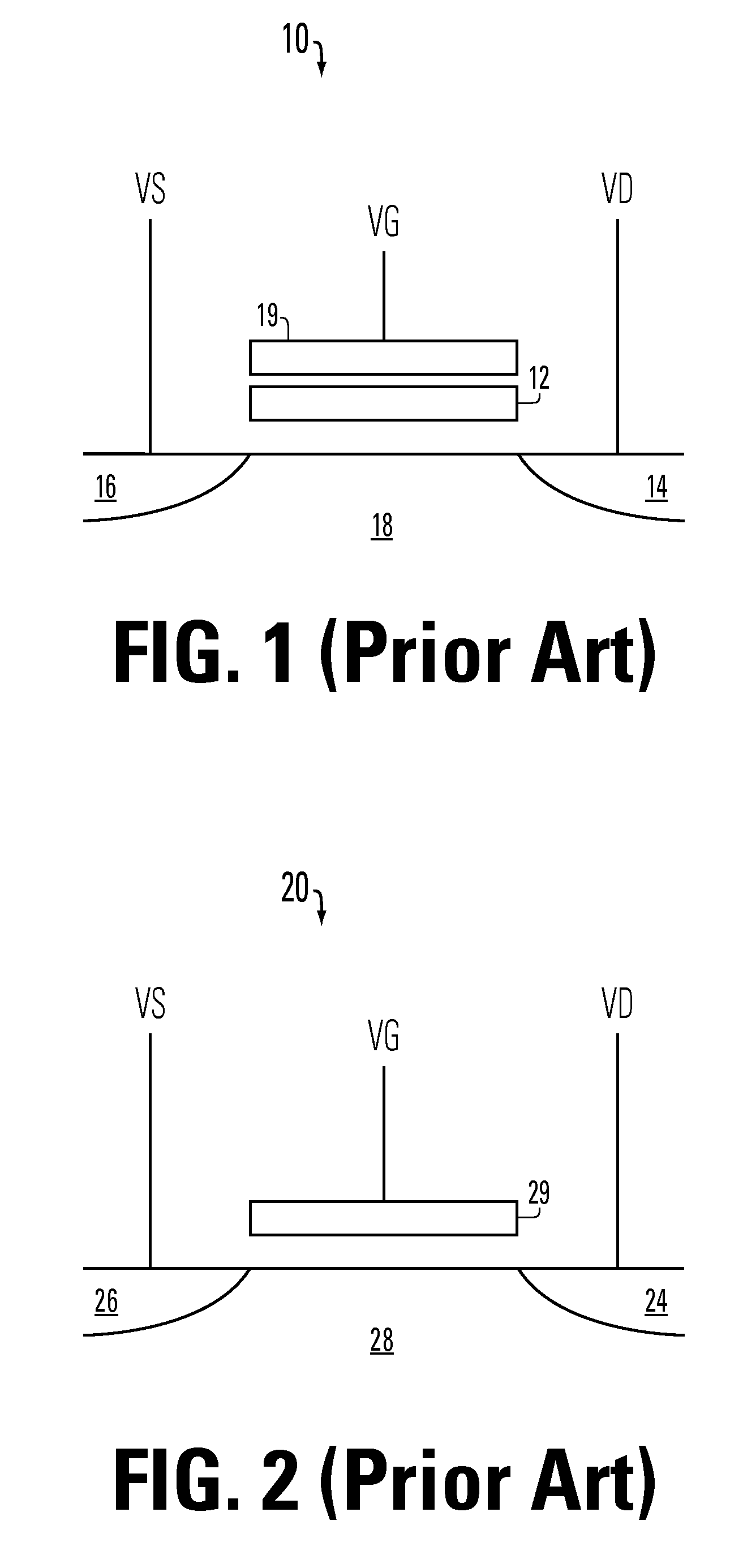Method of programming and erasing a non-volatile memory array
a non-volatile memory and array technology, applied in the field of non-volatile memory, can solve the problems of not all memory cells can be programmed, the number of parallel memory cells that can be programmed, and the voltage required to program or erase the various memory is substantial,
- Summary
- Abstract
- Description
- Claims
- Application Information
AI Technical Summary
Benefits of technology
Problems solved by technology
Method used
Image
Examples
Embodiment Construction
[0024]In order to better understand the system involved in programming and erasing memory cells in a non-volatile memory array, it will be helpful to understand in some detail the method adopted by the prior art, a simplified prior art block diagram of which is shown in FIG. 3a. The memory array 30 is programmed using data from a data input 32. A data buffer 34 stores input data from the data input 32 and then makes use of a data-line driver to drive high voltage onto the bit-lines based on the input data. The data buffer also includes a sense amplifier to check whether bits have passed program verify. Once program verify has been passed the data buffer 34 clears those bits. In the case where a large number of bits needs to be programmed, the bit-lines are divided into groups and programming proceeds with one group at a time.
[0025]Flow control logic 38 controls when the data buffer 34 needs to turn on the data-line driver to drive the high voltage onto the bit lines. It also control...
PUM
 Login to View More
Login to View More Abstract
Description
Claims
Application Information
 Login to View More
Login to View More - R&D
- Intellectual Property
- Life Sciences
- Materials
- Tech Scout
- Unparalleled Data Quality
- Higher Quality Content
- 60% Fewer Hallucinations
Browse by: Latest US Patents, China's latest patents, Technical Efficacy Thesaurus, Application Domain, Technology Topic, Popular Technical Reports.
© 2025 PatSnap. All rights reserved.Legal|Privacy policy|Modern Slavery Act Transparency Statement|Sitemap|About US| Contact US: help@patsnap.com



